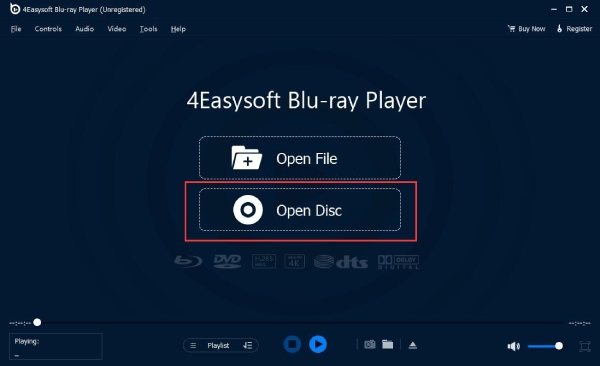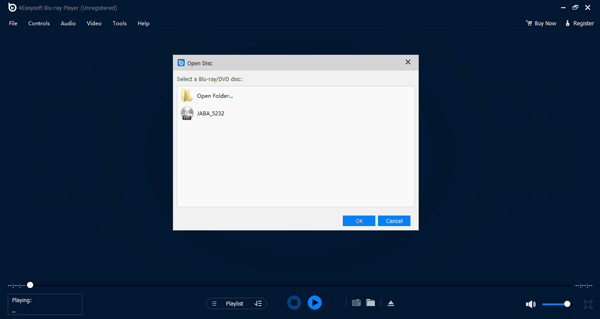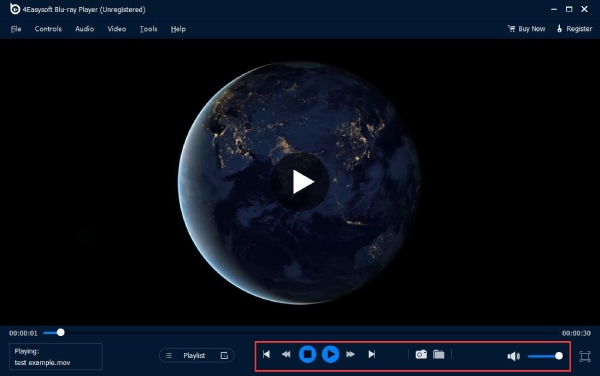Record video, audio, gameplay, and webcam to record precious moments easily.
Identifying the Key Difference Between LaserDisc vs. DVD
As a disc collector, you’ve probably encountered both LaserDiscs and DVDs. While they may look similar at first glance, there are key differences between the two formats. Have you ever wondered what sets them apart—and which might be better suited for your collection? This guide will walk you through the significant differences between LaserDiscs and DVDs, helping you decide which format fits your needs best. Let’s dive in!
Guide List
LaserDisc VS. DVD: Brief Introductions to Them The Differences between LaserDisc and DVD How to Play LaserDisc/DVD Disc with High-Quality FAQsLaserDisc VS. DVD: Brief Introductions to Them
Before delving into this post’s comparison of "LaserDisc vs. DVD", here are brief introductions about these optical discs.
LaserDisc was the first commercial optical disc, and a home video format introduced in 1978. It stores audio and video files and offers excellent image quality and stereo sound. Moreover, this disc has become preferred over videotapes because it provides more precise and sharper images and amazing sound quality.
On the other hand, a Digital Versatile Disc, or DVD, is a digital optical disc storage format released in 1995. It stores high-capacity data, such as high-quality videos and better sound quality. It also stores documents, multimedia presentations, software, etc. DVDs are played using a DVD player, a computer’s disc drive, or a game console.
The Differences between LaserDisc and DVD
Now that you have a brief background about LaserDisc and DVD, it is time to explore this post’s comparison and differences. Exploring this part will give you an idea of which optical disc, LaserDisc vs. DVD, is better overall.
Movie Resolution:
LaserDisc utilizes analog video, which features a resolution of 425 horizontal lines for NTSC and 440 lines for PAL discs. On the other hand, DVD utilizes a digital video with a resolution of 480 lines for NTSC and 576 lines for PAL.
Movie Quality:
Based on the LaserDisc-supported resolution, it offers sharper picture and sound quality than videotapes. However, DVDs provide higher resolution and near crystal clear images than LaserDiscs. Moreover, LaserDisc supports a lower video signal-to-noise ratio and bandwidth than DVDs.
Phisical Size:
Laser Discs are larger than DVDs. They measure 12 inches in diameter, while DVDs only measure 5 inches. Therefore, Laser Discs are more prone to scratches and damage.
Storage Capacity:
Regarding storage capacity, a single-sided LaserDisc can only hold one hour of video. You can also store audio, images, and text; however, you are only limited to storing a few. On the other hand, a single-sided DVD allows you to store over 2 hours of video. You can also store a 2-hour audio, images, texts, and other data.
Usage Condition:
LaserDiscs are mainly used for home video and movie playback, while DVDs are used for movies, TV shows, data storage/backup, multimedia presentations, and software/application distribution."
Playback:
Due to the limited playback options, the laserdisc has a simple playback system. It has many fewer playback codes and supports only popular playback systems. As a result, it can't run all types of files, and its fast-forwarding system can be prolonged. It takes a long time to watch a movie from start to finish. Most DVD players can fast up to 16 times faster. This means you don't have to wait long to watch a movie from beginning to end.
After reading the above comparison of LaserDisc vs. DVD, you see that each has its unique aspect, which stands out. Their corresponding pros and cons help us better understand their strengths and weaknesses.
| Parameter | LaserDisc | DVD |
| Storage Capacity | Limited (30–60 minutes per side) | Larger (4.7 GB single-layer, 8.5 GB dual-layer) |
| Video Quality | Lower resolution, standard definition (480p) | Better quality (480p/576p, some in 720p) |
| Audio Quality | PCM (lossless) audio | Dolby Digital, DTS, and stereo |
| Portability | Large size, hard to transport | Compact, easy to carry |
| Durability | Prone to damage (scratches, warping) | Susceptible to scratches but more durable |
| Special Features | Early commentaries, behind-the-scenes | Extensive special features (commentaries, deleted scenes) |
| Copy Protection/Region Lock | No region lock, less copy protection | Region codes, often copy-protected |
| Compatibility with HDTV | compatibility with HDTV | compatibility with HDTV |
How to Play LaserDisc/DVD Disc with High-Quality
Now that you are done exploring this post’s comparison of LaserDisc vs DVD, it is time to learn how to play them with high quality. Well, that’s easy to do. You just need a great DVD and LaserDisc player to play them with high quality. And in this part, you’ll see two of them!
1. 4Easysoft Blu-ray Player
The best tool for playing DVDs with high-quality output is the professional 4Easysoft Blu-ray Player! This computer and laptop-compatible tool enables you to playback various DVDs on devices like laptops with enhanced quality and lossless high-definition surround sound. Its AI technology improves the output quality of the DVD content. Moreover, this tool is also equipped with options that allow you to select subtitles, audio tracks, switch to full screen, etc., while watching a DVD movie. Furthermore, this tool is also infused with easy-to-use playback controls such as forward, backward, play, stop, and more. So, compared to LaserDisc vs. DVD players, this tool offers a much more convenient and high-quality way.

Integrated with GPU acceleration that lets the play quickly and smoothly.
Delivers a crystal clear and excellent audio-visual experience.
Allow you to organize your best love tracks and create a playlist of your videos.
Let you choose an audio track, audio device, or other video parameters.
100% Secure
100% Secure
Step 1Install the 4Easysoft Blu-ray Player on your computer. Then, run the tool, insert the DVD on a disc drive, and select the "Open Disc" option on the tool’s interface.

Step 2After that, select the DVD and click "Open" to import the file into the tool. The tool will then automatically load and play the DVD.

Step 3While playing, you can adjust the volume of the DVD content through the panel under the player interface, change to full screen, or go backward or forward.

2. Panasonic LX-H670U Laser Disc Player with Auto Reverse 1995 ($1,117.58)
On the other hand, one of the best LaserDisc players you can use is the Panasonic LX-H670U Laser Disc Player. This Panasonic DVD player is designed to become a simple and easy-to-use LaserDisc player for quick and hassle-free disc viewing. It supports an auto-reverse feature that frees you from manual switching. It can also enhance the disc-viewing experience by reducing interruptions, especially for those LaserDiscs that contain lengthy movies/content. Apart from that, it is also infused with necessary buttons for control operations.

Step 1Turn it on and insert the LaserDisc correctly. Ensure that the LaserDisc’s label is facing up. After that, press the "Play" button to start loading and playing your disc.
Step 2The player will automatically activate the auto-reverse feature once the disc reaches the end (Side A—the first side). Once watching over, press the "Stop" and "Eject" buttons to remove the disc from the player.
FAQs
-
1. Which offers the best quality? Regular show DVD vs. LaserDisc?
DVD offers a higher-quality, regular show viewing experience than LaserDisc. DVDs have better resolution, clearer audio, and more stable playback than LaserDisc. Thus, you can acquire the best regular show-watching experience with DVD.
-
2. Can I use LaserDisc to back up documents or other data?
You can’t use LaserDisc to back up documents or other data because it has limited storage capacity and only supports data in an analog format. Furthermore, LaserDisc players and discs are only designed for video or audio playback, not data storage.
-
3. Is a LaserDisc much more expensive than a DVD?
Yes, LaserDiscs are much more expensive than DVDs. This is because, at some point, LaserDisc offered superior quality, especially analog video and audio fidelity, over DVD.
Conclusion
There you go! That’s the comprehensive comparison of LaserDisc vs. DVD! Although LaserDiscs have pros and strengths, you can still clearly see that DVDs are more powerful than LaserDiscs in terms of quality, storage capacity, physical size, and more. Now, if you are looking for a DVD player that enables you to play various DVDs with high-quality output, always remember that the professional 4Easysoft Blu-ray Player can provide you with that! So, visit this tool’s official website, download it, and start your DVD movie marathon!
100% Secure
100% Secure



